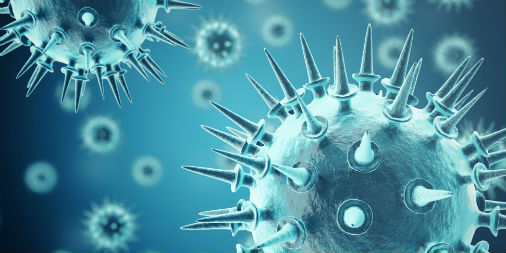
by Paul | Nov 24, 2020 | Spirulina blog
Recent research points the way toward a practical nutraceutical strategy for coping with RNA virus infections including influenza and coronavirus
Philadelphia, February 24, 2020
In a compelling article in Progress in Cardiovascular Diseases, published by Elsevier, Mark McCarty of the Catalytic Longevity Foundation, San Diego, CA, USA, and James DiNicolantonio, PharmD, a cardiovascular research scientist at Saint Luke’s Mid America Heart Institute, Kansas City, MO, USA, propose that certain nutraceuticals may help provide relief to people infected with encapsulated RNA viruses such as influenza and coronavirus.
Both influenza and coronavirus cause an inflammatory storm in the lungs and it is this inflammatory storm that leads to acute respiratory distress, organ failure, and death. Certain nutraceuticals may help to reduce the inflammation in the lungs from RNA viruses and others may also help boost type 1 interferon response to these viruses, which is the body’s primary way to help create antiviral antibodies to fight off viral infections.
The authors draw attention to several randomized clinical studies in humans that have found that over the counter supplements such as n-acetylcysteine (NAC), which is used to treat acetaminophen poisoning and is also used as a mucus thinner to help reduce bronchitis exacerbations, and elderberry extracts, have evidence for shortening the duration of influenza by about two to four days and reducing the severity of the infection. The authors also note several nutraceuticals such as spirulina, beta-glucan, glucosamine, and NAC have either been found to reduce the severity of infection or to cut the rate of death in half in animals infected with influenza. Furthermore, one clinical study in humans testing spirulina noted significant reductions in viral load in those infected with HIV.
“Therefore, it is clear that certain nutraceuticals have antiviral effects in both human and animal studies. Considering that there is no treatment for COVID-19 and treatments for influenza are limited, we welcome further studies to test these nutraceuticals as a strategy to help provide relief in those infected with encapsulated RNA viruses.”
commented Dr. DiNicolantonio.
“Considering the recent interests directed at serious viral infections, especially coronavirus and influenza, this material should be of interest to specialists in cardiovascular diseases but also to a wide range of clinicians outside of our typical readership.”
Editor-in-Chief of Progress Cardiovascular Diseases Carl “Chip” Lavie, MD, Ochsner Clinical School-The University of Queensland School of Medicine, New Orleans, LA, USA,
The full article “Nutraceuticals have the potential for boosting the type 1 interferon response to RNA viruses including influenza and coronavirus,” is available here and published in Progress in Cardiovascular Diseases published by Elsevier.

by Paul | Nov 10, 2020 | Spirulina blog
Babies can eat spirulina in complete safety and assimilate its nutrients without difficulty. Even malnourished babies with diminished capacity for nutrient absorption could assimilate spirulina and recover from malnutrition.


by Paul | Nov 10, 2020 | Spirulina blog
Finally, Spirulina called a superfood because its nutrient profile is more potent than any other food, such as plants, grains or herbs. These nutrients and phytonutrients make spirulina a whole food alternative to isolated vitamin supplements. Protein and amino acids, vitamins and minerals, essential fatty acids, and phytonutrients, comparing with other foods. Spirulina can renourish our bodies and renew our health. Spirulina can be used in the preparation of baby foods because of its therapeutic properties and the presence of antioxidant compounds, also the trend to use spirulina as baby foods were done by Fathima and Salma (2001) and Dillon (2014).


by Paul | Nov 10, 2020 | Spirulina blog
J. Food and Dairy Sci., Mansoura Univ., Vol. 5 (8): 517 – 538, 2014
NUTRITIONAL VALUE OF SPIRULINA AND ITS USE IN THE PREPARATION OF SOME COMPLEMENTARY BABY FOOD FORMULAS
Sharoba, A. M.
Food Sci. Dept., Fac. of Agric., Moshtohor, Benha Univ., Egypt. ABSTRACT
In this study use the spirulina which is one of the blue-green algae rich in protein 62.84% and contains a high proportion of essential amino acids (38.46% of the protein) and a source of naturally rich in vitamins especially vitamin B complex such as vitamin B12 (175 μg / 10 g) and folic acid (9.92 mg / 100 g), which helps the growth and nutrition of the child brain, also rich in calcium and iron it containing (922.28 and 273.2 mg / 100 g, respectively) to protect against osteoporosis and blood diseases as well as a high percentage of natural fibers. So, the spirulina is useful and necessary for the growth of infants and very suitable for children, especially in the growth phase, the elderly and the visually appetite. It also, helps a lot in cases of general weakness, anemia and chronic constipation. Spirulina contain an selenium element (0.0393 mg/100 g) and many of the phytopigments such as chlorophyll and phycocyanin (1.56% and 14.647%), and those seen as a powerful antioxidant. Finally, spirulina called the ideal food for mankind and the World Health Organization considered its “super food” and the best food for the future because of its nutritional value is very high. Sixteen food formulas were prepared for as complementary food babies (1-3 years age) by using spirulina at 0, 2.5 0.5 and 7.5% for the production of two types of baby food one of them is ready to eat by using some fruits and vegetables. Papaya fruits with good nutritional values and cheap price as an essential ingredient of 30% in the four formulas and banana fruit which rich in potassium in four formulas addition to potatoes purée and carrot purée by adding 10% for each and apple purée, guava puree and mango juice by adding 15% for each been mobilized mixes in jars glass and thermal treatment was carried out at 100 oC for 40 minutes. The second type of baby foods formulas was production by using cereals, legumes and some dried green vegetables, where it was manufactured 8 dried formulas four of them by 30% wheat flour 72% and four others by 30% milled rice in addition to the 30% crushed pearl barley and dryer lentils and dried spinach dried cauliflower by adding 10% for each formulas. Then, evaluated all formulas microbiologically to study its safety before sensory evaluation and found to be microbiology safe. Sensory evaluation of produced formulas were acceptable sensory significantly. After that, chosen 4 formulas containing 5% spirulina based on the results of sensory evaluation was conducted analysis chemotherapy and natural for these selected formulas. The chemical composition indicated that these formulas were suitable as a food supplement for children aged 1-3 years. On the other hand, these formulas were economic cost and can be produced on the scale of domestic and industrial scale, as well as can be exported to the outside.
Keywords: Spirulina; amino acids; fatty acids; vitamins; phytopigments; minerals;
 microbiological examination; food formulas; baby foods
microbiological examination; food formulas; baby foods
.
INTRODUCTION
Spirulina is the dried biomass of the cyanobacterium Arthrospira platensis, it has been widely used in several countries, it is considered GRAS
(generally recognized as safe), without toxicological effects, and it is approved by the FDA (U.S.A.) and ANVISA (Navacchi et al., 2012). Rich in protein (up to 65%), formulators use spirulina in specialty food bars, powdered nutritional drinks, popcorn, beverages, fruit and fruit juices, frozen desserts and condiments (Simpore et al., 2005 and 2006).
Microalgae have received increasing attention due to the fact that they represent one of the most promising sources of compounds with biological activity that could be used as functional ingredients. Their balanced chemical composition (good quality proteins, balanced fatty acid profiles, vitamins, antioxidants and minerals) and their interesting attributes can be applied in the formulation of novel food products (Spolaore et al., 2006).
Spirulina, filamentous blue-green microalgae or cyanobacteria, is well known as a source of protein (60-70 g/100 g) of high biological value, since it is a rich source of vitamins, mainly vitamin B12 and pro-vitamin A, minerals, especially iron, and g-linolenic acid, essential fatty acids precursor for prostaglandins (Simpore et al. (2005 and 2006) and Habib et al., 2008). Furthermore, spirulina contains such molecules as phycocyanin, β-carotene and xanthophyll pigments,α-tocopherol and phenolic compounds, which are responsible for the antioxidant activities of these microalgae, as shown by several authors for in vitro and in vivo experiments (Patel et al.(2006) and Robert (2010)). Moreover, most research has focused on the health effects of spirulina as a dietary supplement for humans and animals. Many studies have shown the effects of these microalgae that may result in significant therapeutic applications: an anti-cancer effect (Mao et al., 2005), a hypolipidemic effect (Narmadha et al., 2012), and a protective effect against diabetes and obesity (Anitha and Chandralekh, 2010). These advantages make spirulina a good raw material for the healthy food.
Spirulina offers remarkable health benefits to an undernourished children. It is rich in beta-carotene that can overcome eye problems caused by vitamin A deficiency, it provides the daily dietary requirement of beta- carotene which can help prevent blindness and eye diseases Seshadri (1993).The protein and B-vitamin complex makes a major nutritional improvement in an infant’s diet. It is the only food source other than breast milk containing substantial amounts of essential fatty acid, essential amino acids and GLA that helps to regulate the entire hormone system Ramesh et al. (2013).
Spirulina’s concentrated nutrition makes it an ideal food supplement for people of all ages and lifestyles. Spirulina is about sixty percent complete, highly digestible protein. Spirulina contains every essential amino acids. It contains more beta-carotene than any other whole food; it is the best whole food source of gamma linolenic acid (GLA); it is rich in B vitamins, minerals, trace elements, chlorophyll, and enzymes; and it is abundant in other valuable nutrients about which scientists are learning more each year, such as carotenoids, sulfolipids, glycolipids, phycocyanin, superoxide dismutase, RNA and DNA (Parry, 2014).
In most developing countries commercial weaning foods of excellent quality either imported or locally produced are presently available, but due to sophisticate processing, expensive packing, extensive promotion and solid
518
J. Food and Dairy Sci., Mansoura Univ., Vol. 5 (8), August, 2014
profit margins, the price of these commercial products are generally in the order of 10-15 times the cost of the common staple foods. While these products are generally highly appreciated and their use and value are well understood, they are priced beyond the purchasing power of the majority of population in the lower income groups, Who spent already about 50-75% of their income in common foods (Wurdemann and Van de Meerendok, 1994).
Spirulina platensis is used in the food, medicine, and cosmetic industries, and as an additive for chips, fruit juices, sauces, spice mixtures, vegetables, soups, and other products. This investigation contributes to the determination of nutrients in spirulina platensis microalgae used in the food and aquaculture feed industries.
Therefore, owing to all these advantages, the present work aims to study the physicochemical and nutrition values of spirulina, and formulate different babies food formulas to use as a complementary for baby food formulas with lower cost. Also, the formulas organolyptically, physicochemical properties were evaluated.
PLEASE SEE ARTICLE for the rest of the paper.

by Paul | Nov 10, 2020 | Spirulina blog
Spirulina and nursing mothers – the perfect supplement.
Dr Cath February 6, 2013 Spirulina and nursing mothers – the perfect food.
A very good friend of mine just give birth to a baby girl named Delia. She is just the cutest baby ever! My friend asked me if she can continue to take Spirulina as she plans to breastfeed her baby girl. The answer is a resounding YES!!
Nursing moms should really pay attention to what they eat. Indeed, their diet while breastfeeding is key to a healthy baby!
Okay, it is true that, even if mothers don’t have the perfect diet, their breast milk will probably meet their baby’s basic nutritional needs. But this is only true to a certain extent! Did you know that if your diet is very low in calories or has a major deficiency it will greatly impact the quality and quantity of your milk.
If you don’t get the nutrients you need with a healthy and balanced diet, your body will draw into its reserve until they are completely depleted. Of course, if your body doesn’t have the proper nutrition then you won’t have the energy and stamina you need to take care of your new baby!
This is where Spirulina can help. Big time! Spirulina is a super-rich food that has a lot of benefits for our human organism. It supplies vitamins, anti-oxidant, proteins, healthy fat, etc, nourishing the body on a cellular level.
You’ll also be happy that it can increase the IQ of your baby too! Read this post for more info on that topic.
Talking about healthy fat, have you heard about GLA?
GLA stands for Gamma-Linolenic Acid, it is an omega-6 fatty acid that is found mostly in plant-based oils. Omega-6 fatty acids are considered essential fatty acids: they are necessary for human health however the body can’ t make them – this is why you HAVE to get them through your nutrition. Omega-6 fatty acids, along with omega-3 fatty acids play a crucial role in brain function as well as normal breastfeeding growth and development for the fetus and the baby. Make sure you obtain a good, high-quality source of these fatty acids during your pregnancy and while breast-feeding.
Polyunsaturated fatty acids help to stimulate skin and hair growth, maintain bone health, regulate metabolism, and maintain the reproductive system.
Aside from human breast milk and evening primrose, Spirulina is the only other food source rich in GLA. The GLA content comprises 25% of the total polyunsaturated fatty acid content of Spirulina, a number that is much higher than the GLA content of evening primrose oil (only 7%)!
The Importance of GLA is not only for nursing mothers!
GLA is an essential fatty acid that has numerous benefits to the body. Along with omega-3 fatty acids, GLA has powerful anti-inflammatory properties. Both fatty acids are excellent for preventing and treating skin conditions such as eczema, psoriasis, wrinkles, rashes, and more.
Research has confirmed that GLA has positive effects in breast cancer treatment; they enhance lubrication in those with Sjogren’s syndrome; help relieve PMS symptoms, breast pain, skin conditions (including eczema and psoriasis, and wrinkles), and attention-deficit hyperactivity disorder in children; improves cardiovascular health, mental health; and much more!
A British study published in 2000 observed women who had locally advanced and metastatic breast cancer (when cancer cells spread elsewhere in the body). The study found that women with breast cancer who were taking Tamoxifen (a drug that blocks estrogen-receptor-positive breast cancer) and those who received GLA demonstrated faster clinical response than those just taking Tamoxifen alone. Study participants received 3 grams of GLA. The researchers concluded that GLA was a useful adjunct to primary Tamoxifen treatment with no serious side effects: “… this study suggests high-dose oral GLA be a valuable new agent in the treatment of hormone-sensitive breast cancer.”

Childbirth & Spirulinanutrition_balance
Childbirth is one of the most tiring stages in any woman’s life. While it is important to have a wholesome diet, it is also crucial that nutrients be easily absorbed into the system. Spirulina can help there too! Its rich protein content (nearly 70%) has a perfectly balanced amino acid profile that ensures proper utilization assimilation of the food consumed. Its natural iron and folic acid improve hemoglobin levels in the blood. Iron deficiency anemia in mothers and children is the most prevalent nutritional disorder.
Pregnant women need Spirulina’s extra easy-to-digest protein and bioavailable iron, without additional saturated fats. In India and Vietnam, it’s prescribed for pregnant and nursing mothers as Spirulina increases lactation in nursing mothers.
Children & Spirulina
Parents are often surprised at how their children enjoy spirulina. Children like to suck on tablets and many enjoy munching on spirulina-covered popcorn. Often a jar of tablets may have to be hidden just like a jar of cookies. Children often display a big green smile.







 microbiological examination; food formulas; baby foods
microbiological examination; food formulas; baby foods

Recent Comments